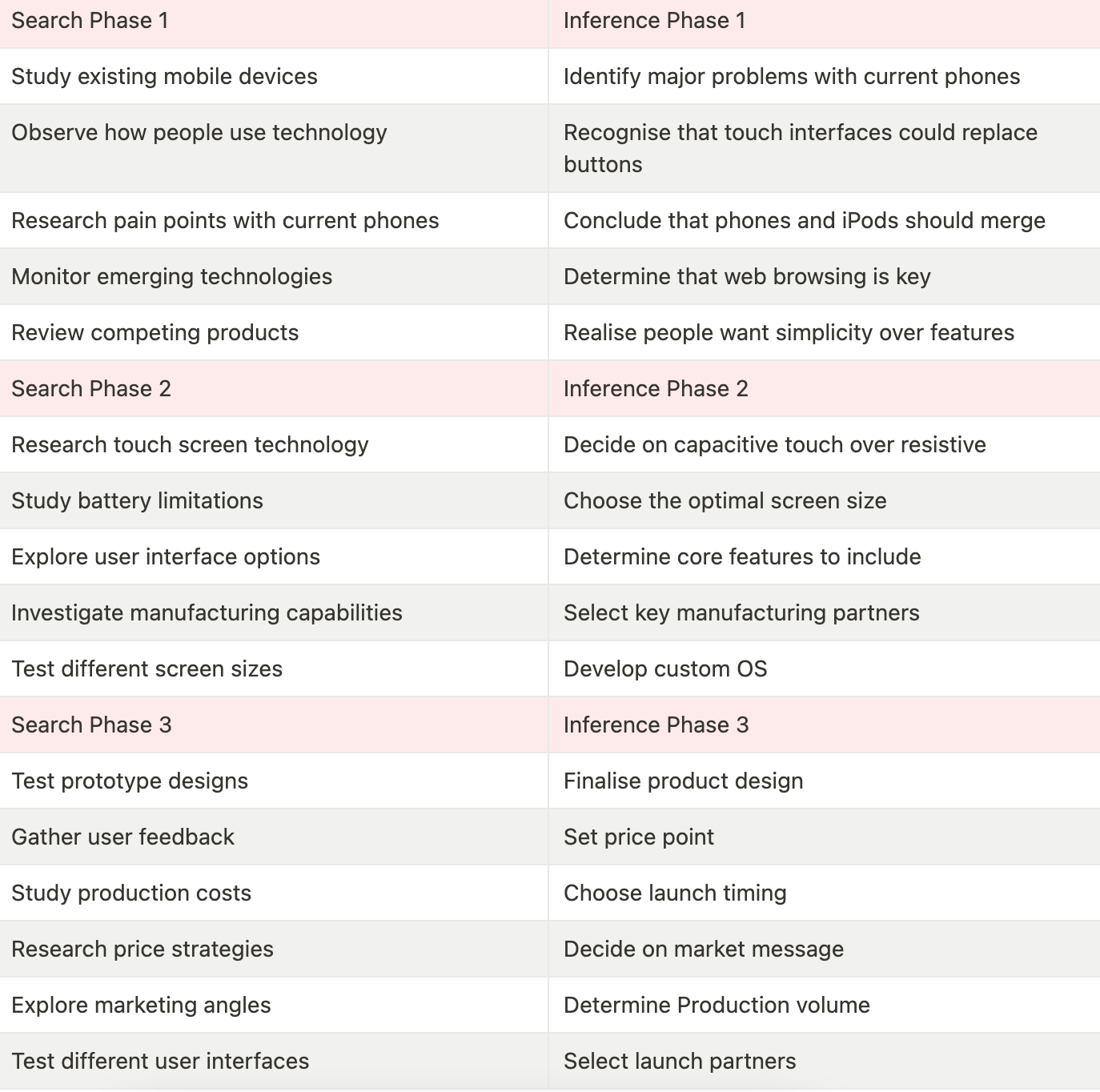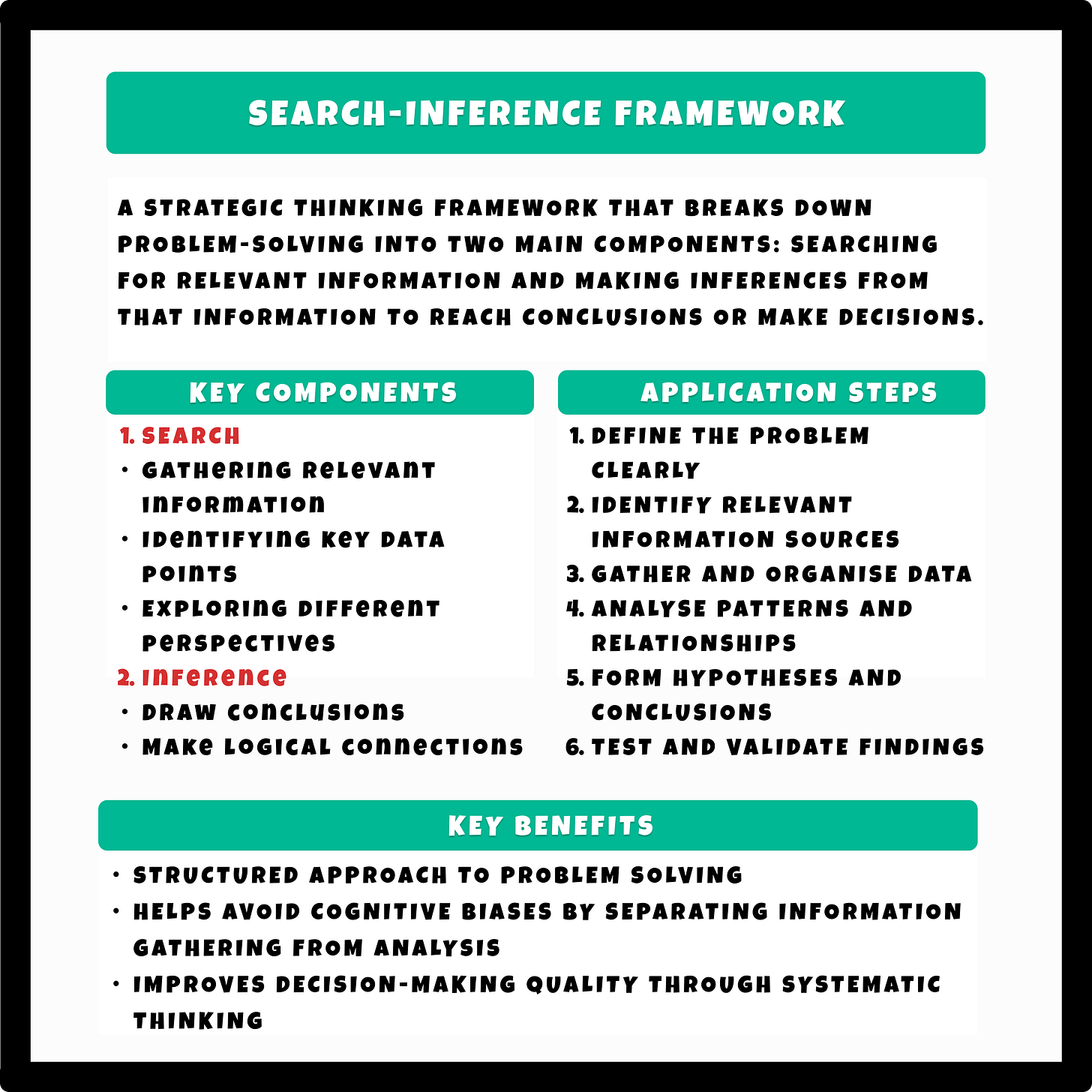How To Make Better Decisions Without A Psychology Degree
The search-inference framework
When it comes to making decisions, especially big or complex ones, we are often bombarded with information causing crippling analysis paralysis that often leads to more questions than answers, such as:
Which option is better?
How do I know if I will make the right choice?
Am I going to regret this?
This isn’t a nice place to be and can leave us with some undesirable choices:
Wing it and hope you make the right choice
Don’t make any decision, fearing you may make the wrong one
Let somebody else decide for you
None of these choices are great.
If you don’t have frameworks for collecting and sorting information, you will never be efficient at making decisions.
The search-inference framework is a simple 2-step framework for making better decisions.
Let’s get into it.
What is the search-inference framework?
The search-inference framework states that all thinking can be modelled into a two-step process of search and inference:
Search - Scanning for potential ideas or solutions when seeking a question's desired outcome (goal). You search through options, drawing on past experiences, knowledge and available resources. These are the possible solutions to the original question in service of achieving the goal.
Inference - Once the potential options have been gathered, the inference step involves evaluating each option and looking for any evidence that will either help or hinder you in trying to achieve your goal. To do this, you could assign pros and cons for each option, predict potential outcomes and weigh these against your desired goal.
💡 Quick tip: The search-inference framework can be split into 1 phase or multiple phases if needed. Let’s see how Steve Jobs might have used the search-inference framework when thinking, “How can I design a new generation phone?”
Or how about a single parent asking, “How can I balance work and parental commitments to find time to run a marathon?”
How can the search-inference framework go wrong?
The outcome of your final decision depends on how well you conducted your search in the first instance. There are three primary ways the search-inference framework could fail:
1. Our search for possibilities is sub-optimal or cut short too soon without requiring information that could have been useful to us.
2. Cognitive biases can lead you to choose possibilities that already appeal to you or could make you look good in other people's eyes.
3. Overthinking can lead to analysis paralysis and thus spending too much time thinking about the potential outcomes and evidence collected.
Final thoughts
The search-inference framework uses rational analysis to help you achieve your goal by searching for potential answers and evaluating them against the primary question. It’s great for when you need to slow down or when the importance of the outcome is high. It’s perhaps not so great for people's daily decisions, such as “What shall I eat for dinner,” or “Is that car travelling fast enough to hit me if I cross the road now.”
If you have a question and are unsure how this could help you, try using the free battle card I created below and follow the steps. You can comment or message me, and I’ll be happy to help you answer it.
Until next time, Karl (The School of Knowledge).
Download the full-resolution PDF HERE.
Whenever you’re ready
The School of Knowledge helps you understand the world of business through practitioners. Turn insights into actions from those who try, fail and do ( Those with skin in the game). 📚💡
Click below to join our growing community of like-minded doers:








Karl, you're doing a great job with the School of Knowledge. This post on making better decisions misses theake in an important way. The "Choosing By Advantages Decisionmaking System" (CBA) is perhaps the only system of approaches for making sound decisions. The principles were discovered by Jim Suhr and then developed into a system. There are numerous methods for making different types of decisions. However, one rule holds across the board: decisions must be based on the importance of advantages among the identified alternatives. Rebecca Snelling's book, The Choosing By Advantages Decisionmaking System, does does a good job introducing the concepts and the typical methods.